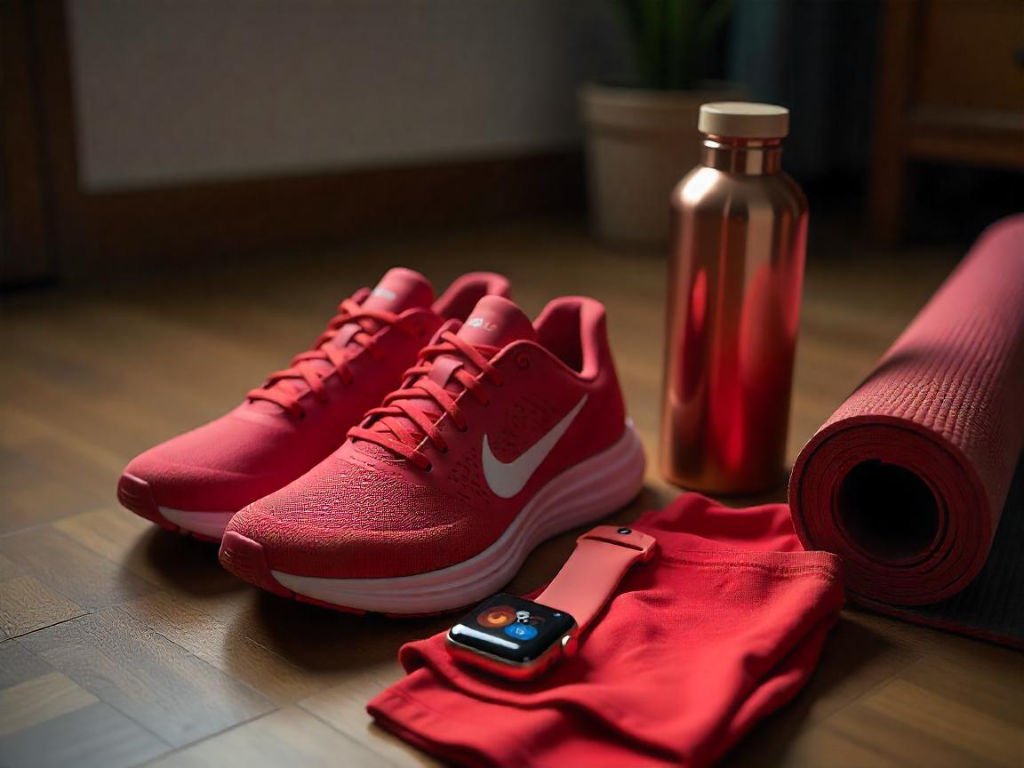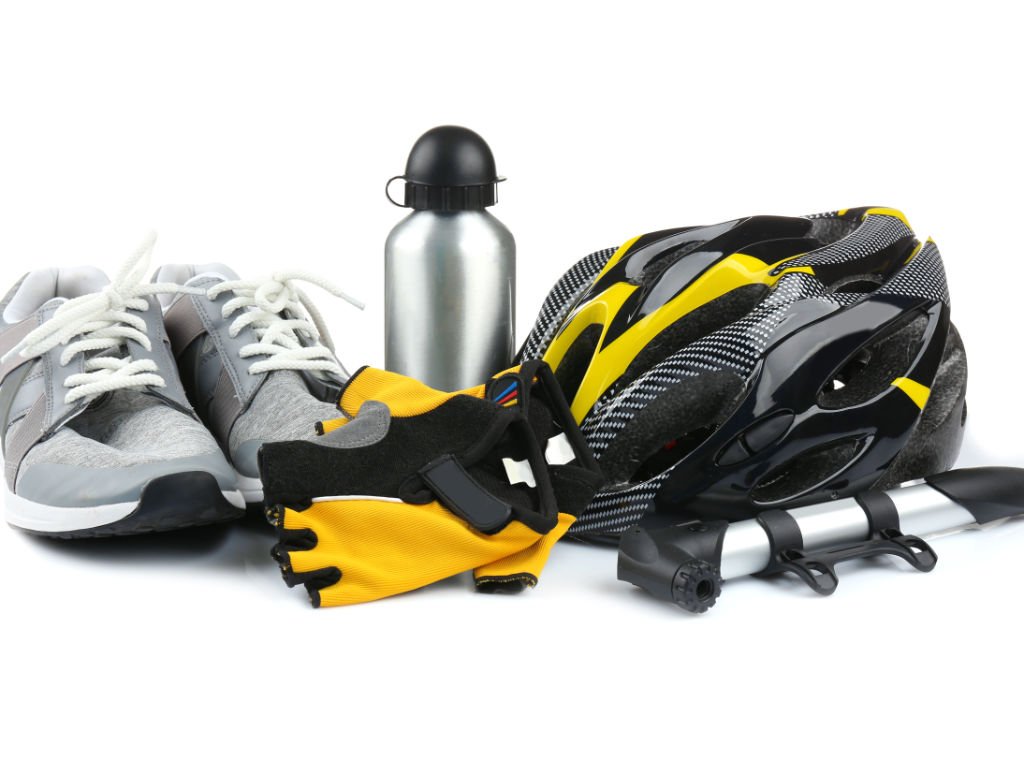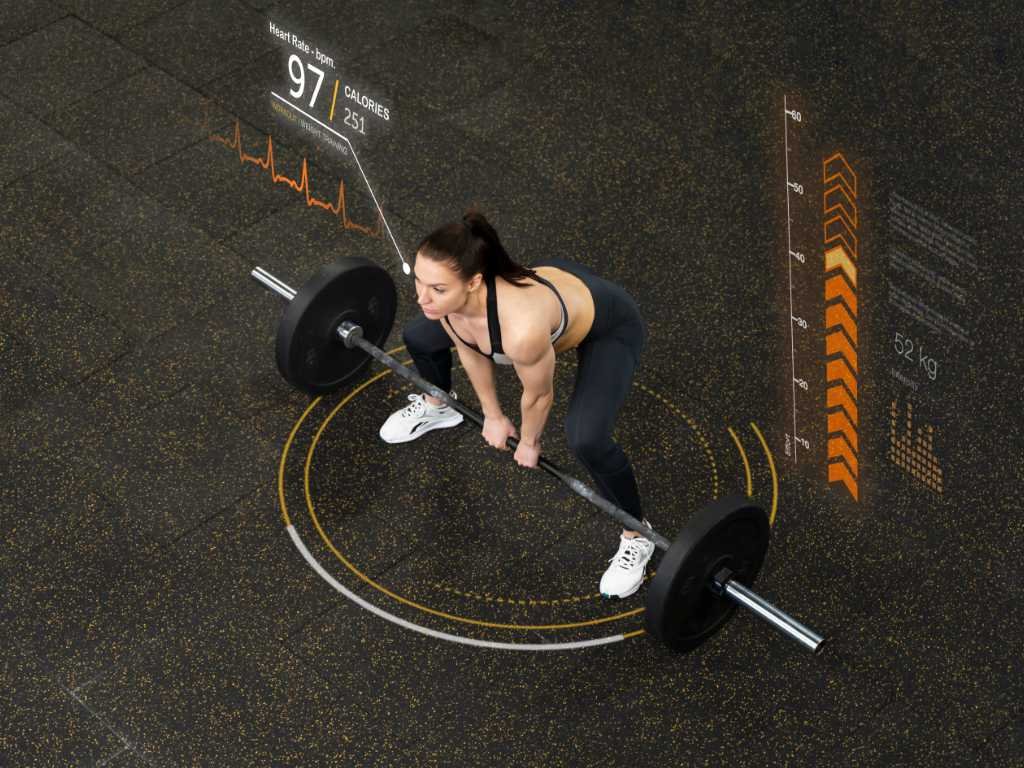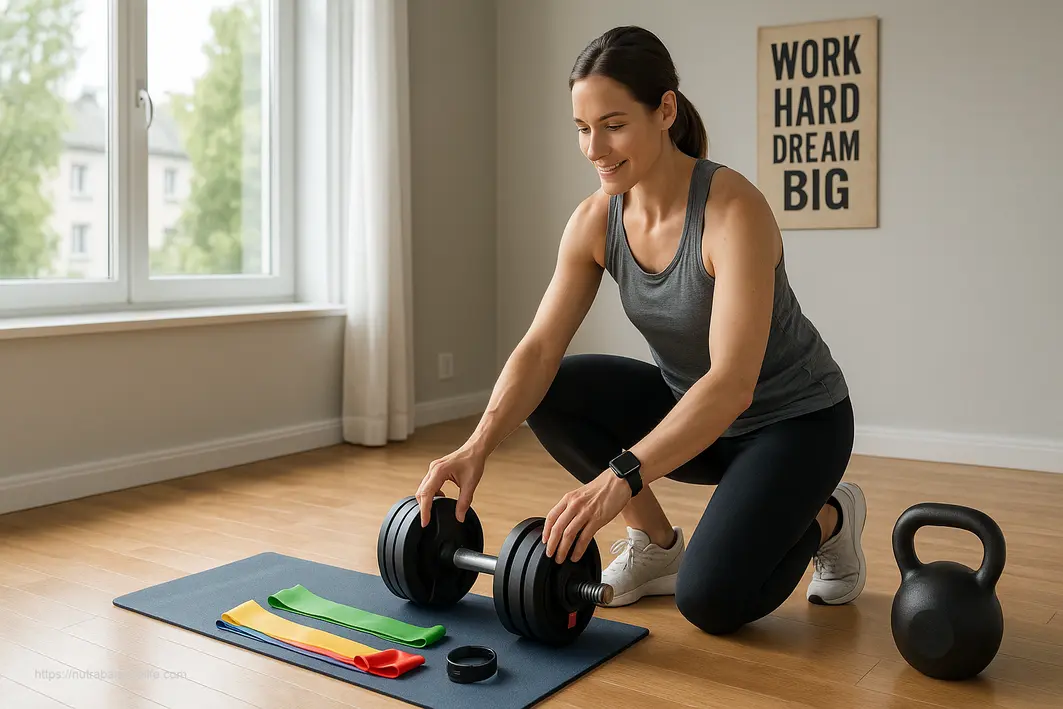Table of Contents
Ever wonder why some workouts feel effortless while others leave you frustrated? The secret often lies not in your motivation, but in having the right exercise essentials at your fingertips. Whether you’re a fitness newbie or a seasoned gym-goer, the foundation of your fitness journey depends on having proper equipment, knowledge, and planning to support your goals.
Optimize Your Workout: Top 5 Exercise Essentials for Ultimate Fitness
Achieving your fitness goals requires more than just motivation—you need the right tools and strategies. Exercise essentials are the foundational components, gear, and accessories that optimize workout effectiveness, whether for beginners or advanced athletes. The correct set of essentials not only enhances performance but also supports safety, convenience, and long-term progress.
Understanding Exercise Essentials
Exercise essentials refer to the basic components and tools necessary for a well-rounded, effective fitness regimen. They include:
- Foundational fitness elements such as cardio endurance, muscular strength and endurance, flexibility, and healthy body composition.
- Quality equipment and accessories that support and amplify workout results.
For both new and experienced fitness enthusiasts, these essentials ensure workouts are effective, safe, and adaptable to personal fitness needs and progression.
The American College of Sports Medicine recommends focusing on five key components of physical fitness: cardiovascular endurance, muscular strength, muscular endurance, flexibility, and body composition. Each component requires specific attention and often different types of exercise essentials to develop optimally.
Must-Have Exercise Gear for Beginners
If you’re just starting your fitness journey, don’t get overwhelmed by the endless array of equipment options. Begin with these foundational exercise essentials:
- Supportive Athletic Shoes: Invest in proper footwear designed specifically for your primary activity. Running shoes have different support structures than cross-training or weightlifting shoes.
- Moisture-Wicking Workout Clothes: Comfortable apparel that moves with your body and keeps sweat away from your skin can make a tremendous difference in workout quality.
- Water Bottle: Hydration is non-negotiable! A reusable water bottle ensures you maintain proper fluid intake during exercise.
- Fitness Tracker or Smartwatch: While not absolutely necessary, these devices help monitor heart rate, track progress, and provide valuable data about your workouts.
- Exercise Mat: For floor exercises, stretching, yoga, or Pilates, a good mat provides cushioning and stability.
Starting with these basics gives you a solid foundation without breaking the bank. As your fitness routine evolves, you can gradually add more specialized equipment.

Advanced Fitness Gear Recommendations
As your fitness levels improve, you might consider investing in more specialized exercise essentials that match your evolving goals:
- Wearable Technology: Advanced smartwatches like the Apple Watch Series 8 or Garmin Fenix series offer detailed metrics including VO2 max estimates, recovery time recommendations, and training load analysis.
- Performance Apparel: Brands such as Ten Thousand and Under Armour offer moisture-wicking, durable clothing designed for specific activities and weather conditions. Look for compression garments that can aid in recovery and performance.
- Supportive Footwear: Different activities demand specialized footwear. Running enthusiasts might benefit from shoes with appropriate pronation support, while weightlifters need stable heels and incompressible soles.
- Recovery Tools: Percussion massage guns, compression boots, and advanced foam rollers can dramatically improve recovery times between workouts.
When selecting advanced gear, prioritize quality over quantity. One excellent piece of equipment that perfectly meets your needs is better than multiple mediocre items that collect dust.
Creating Your Home Gym: Essential Equipment
The pandemic accelerated the home fitness trend, and many people have discovered the convenience of working out at home. If you’re building a home gym, focus on these versatile exercise essentials:
- Adjustable Dumbbells: Space-saving and versatile for strength training, these allow you to change weights quickly without needing a full rack.
- Resistance Bands: These affordable, portable tools provide varying levels of resistance for strength training and can help with mobility work too.
- Stability Ball: Improves core strength and can double as a bench for various exercises.
- Kettlebells: Offer unique training benefits for building strength, power, and cardiovascular fitness in one compact tool.
- Pull-Up Bar: Enables comprehensive upper body training with minimal space requirements.
- Cardio Equipment: Consider what you’ll actually use—whether that’s a jump rope (inexpensive but effective), a folding treadmill, or a stationary bike.
The beauty of home equipment is that you can start small and expand as your fitness progresses and budget allows. Focus on multipurpose items that deliver the most bang for your buck and match your fitness interests.
Gym Accessories That Maximize Your Workout
Small but mighty, these accessories can significantly enhance your exercise experience:
- Lifting Gloves or Grips: Protect your hands and improve grip during heavy lifts.
- Weightlifting Belt: Provides crucial support during heavy compound movements like squats and deadlifts.
- Foam Roller and Massage Ball: Essential for myofascial release, aiding recovery and preventing injuries.
- Resistance Bands: Versatile for warm-ups, assistance work, and adding variable resistance to exercises.
- Workout Journal or App: Tracking progress is fundamental to improvement; find a system that works for you.
- Gym Bag with Compartments: Keeps gear organized, with separate spaces for shoes, sweaty clothes, and clean items.
These accessories address common workout challenges and can make the difference between an efficient session and a frustrating one. They’re also generally affordable, making them excellent additions to your exercise essentials collection.
The Science of Effective Workout Planning
Having the right exercise essentials goes beyond physical equipment—proper planning is equally crucial:
- Set SMART Goals: Specific, Measurable, Achievable, Relevant, and Time-bound objectives give your training purpose and direction.
- Follow Progressive Overload: Gradually increasing the demands placed on your body is the fundamental principle behind all fitness improvements. This might mean adding weight, increasing reps, reducing rest times, or improving technique.
- Include All Fitness Components: A well-rounded program addresses cardiovascular health, strength, mobility, and recovery.
- Plan for Recovery: Rest days and deload weeks aren’t just important—they’re essential for long-term progress and injury prevention.
- Track Progress Methodically: Use a workout app or journal to record weights, reps, subjective feelings, and measurements over time.
According to the National Strength and Conditioning Association, proper program design should include attention to exercise selection, order, training frequency, and load management—all customized to your individual needs and goals.
Sport-Specific Exercise Essentials

cycling exercise essentials
Different activities demand specialized equipment. Here’s what you need for popular fitness pursuits:
For Runners:
- Properly fitted running shoes
- Anti-chafing balm
- Reflective gear for safety
- Running-specific socks to prevent blisters
- Hydration belt for longer distances
For Weightlifters:
- Lifting shoes with stable, slightly elevated heels
- Wrist wraps for joint support
- Lifting belt for heavy compound movements
- Chalk for improved grip
- Knee sleeves for joint warmth and stability
For Yoga Practitioners:
- High-quality, non-slip mat
- Yoga blocks and straps for modified poses
- Comfortable, stretchy clothing that allows full range of motion
- Yoga towel for hot yoga sessions
For Cyclists:
- Properly fitted helmet
- Padded shorts or bibs
- Cycling-specific shoes and pedals for efficiency
- Bike repair essentials for on-the-go fixes
- Cycling computer to track metrics
Investing in the right sport-specific gear can significantly improve performance, comfort, and injury prevention in your chosen activity.
Budget-Friendly Exercise Essentials
Quality fitness gear doesn’t always require breaking the bank. Here are smart ways to build your exercise essentials collection affordably:
- Start with multipurpose equipment: Items like resistance bands, adjustable dumbbells, and a quality mat offer versatility for many different workouts.
- Shop sales cycles: Fitness equipment typically goes on sale in January (New Year’s resolutions) and June (pre-summer).
- Consider previous-generation models: Last year’s fitness trackers and equipment often perform nearly as well as the latest versions at a fraction of the cost.
- Look for quality used equipment: Especially for durable items like kettlebells, weight plates, and benches.
- Improvise when possible: A towel can replace a yoga strap, filled water bottles can serve as light weights, and stairs can substitute for a step platform.
Remember that clever substitutions and strategic purchases can create an effective home gym without excessive spending.
Maintaining Your Exercise Essentials
Proper care extends the life of your fitness equipment and ensures it remains safe to use:
- Clean equipment regularly: Wipe down machines, mats, and handles with appropriate cleaners to remove sweat and bacteria.
- Inspect for wear: Check resistance bands for tears, weights for cracks, and electronic equipment for proper functioning.
- Store properly: Keep equipment out of extreme temperatures and direct sunlight when possible.
- Follow manufacturer guidelines: Some items have specific care instructions that will extend their usefulness.
- Replace when necessary: Even well-maintained equipment eventually wears out. Know when to retire gear that no longer functions optimally or safely.
Maintaining your exercise essentials not only saves money in the long run but also prevents injury that could result from damaged equipment.
How to Choose Exercise Essentials That Meet Your Goals

With countless options available, selecting the right exercise essentials can feel overwhelming. Here’s a framework to guide your decisions:
- Clarify your fitness goals: Are you primarily focused on strength, endurance, flexibility, weight management, or sport-specific performance?
- Consider your preferred workout environment: Home, gym, outdoors, or a combination?
- Be honest about your commitment level: Will you use specialized equipment consistently enough to justify its cost?
- Evaluate space constraints: Do you have room to store and use the equipment properly?
- Research thoroughly: Read reviews from reputable fitness sources and consider the experiences of people with similar goals.
- Try before buying when possible: Test equipment at a gym or store, or check return policies for online purchases.
When deliberating between options, prioritize equipment that addresses your primary goals and fits your lifestyle realistically.
Conclusion
Understanding and investing in the right exercise essentials is central to optimizing workouts and achieving fitness goals. Assess your needs, prioritize foundational gear, and select accessories that support your routine and objectives. Whether training at home or in a gym, building a personalized set of essentials will make your fitness journey safer, more efficient, and more enjoyable.
Remember that the best exercise essentials are the ones you’ll actually use consistently. Start with fundamentals that match your current fitness level and interests, then expand your collection as your skills and needs evolve. With the right tools at your disposal, you’re well-equipped to turn fitness aspirations into lasting achievements.
FAQs About Exercise Essentials
What are the absolute minimum exercise essentials for beginners?
For complete beginners, start with comfortable athletic shoes, appropriate workout clothes, a water bottle, and a basic exercise mat. These fundamentals allow you to begin a variety of exercise programs with minimal investment while ensuring basic comfort and safety.
How often should I replace my running shoes?
Most experts recommend replacing running shoes every 300-500 miles, which translates to roughly every 4-6 months for regular runners. Signs that replacement is needed include visible wear on the soles, decreased cushioning, and new aches or pains during or after runs.
Are expensive fitness trackers worth the investment?
It depends on your goals and how you’ll use the data. High-end trackers offer advanced metrics like sleep quality analysis, stress monitoring, and detailed workout analytics. If you’ll use these features to inform your training decisions, they may be worth it. However, more affordable options provide the basics (step counting, heart rate monitoring) that satisfy many users’ needs.
What exercise essentials provide the most versatility for home workouts?
Resistance bands, adjustable dumbbells, and a stability ball offer exceptional versatility for home workouts. With just these items, you can perform hundreds of exercises targeting all major muscle groups and fitness components, making them ideal investments for space-constrained home gyms.
How do I know which exercise essentials are right for my fitness level?
Match equipment to your current abilities while allowing room for growth. Beginners should focus on foundational items that accommodate proper form learning. Intermediate exercisers benefit from adjustable equipment that can progress with them. Advanced fitness enthusiasts may need more specialized tools that address specific performance goals or training methods.
Is it better to build a home gym or invest in a gym membership?
This depends on your preferences, budget, and living situation. Home gyms offer convenience and privacy but require space and upfront investment. Gym memberships provide access to a wide variety of equipment and often classes or professional guidance, but require travel time and ongoing monthly fees. Many people find a hybrid approach works best—having basic exercise essentials at home while using a gym for specialized equipment or social motivation.



1 comment
[…] of your health routine. Better flexibility can improve your performance in cardio workouts, make strength training safer and more effective, and even support better sleep quality by reducing physical […]